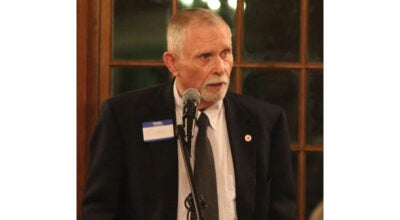Large beauty found on island in Maine
Published 9:18 am Saturday, May 14, 2016

The beautiful Bubble Pond with double mounds in Acadia National Park, which is located on Mount Desert Island off the coast of Maine. — SUBMITTED | ARCHIE HOWELL
by James D. Howell
I, along with a handful of others, hang around the gathering point to meet the park ranger. It’s cool this morning, jackets are in order despite the August day. Some brave the chill, knowing that it will be a rapid warm-up. Morning fog is thinning by the minute; distant rock faces are becoming sharply focused.
This is Acadia National Park. It occupies most of Mount Desert Island, all of some smaller islands, and parts of others, on this rocky, glacier-scarred leftover from the last ice age. The park includes a coastal section of the mainland as well. This is the Maine coast, about 35 miles east of Bangor. It’s easy to be a little intimidated by the size of this park.
I learn that the land was initially acquired and donated by a series of wealthy and non-wealthy persons, the most notable, John D. Rockefeller Jr. Mr. Rockefeller personally donated over 11,000 acres to the park. From about 1915 to 1933, he hired engineers and designers to create carriage roads throughout this section. About 50 miles were built and are maintained by the National Park Service. Only horse-drawn carriages of all types are permitted on these roads.
There’s a carriage ride in my future.
The carriage road system connects most areas of the park, with overpasses and bridges where appropriate to maintain separation from motor vehicles. It’s interesting that while the visible portions of the bridges are cobblestone-covered, the bridges themselves are reinforced concrete. That permitted a little faster construction and a stronger, longer-lasting bridge.
All of Maine was once part of Acadia, a French colonial land with French dialect-speaking people. They came from a specific area of France and maintained a separate culture from the larger French population to the immediate north. During the French and Indian wars, the British claimed this land to the Canadian border and many of the inhabitant were forced to flee.
Many of those Acadians died from disease, starvation or exposure. Some made it all the way over to the Mississippi River and found their way south to Louisiana. They assimilated into the friendlier, French- speaking region, and became today’s Cajuns. Their language is still a patois, far from classical French. Their mastery of waterways and boating made them an indispensable part of today’s navigable river culture. Cajun is a second language of river pilots and watercraft captains.
I head for the horses. Wildwood Stables operates numerous carriage rides from a facility on the Loop Road. I make the turn at their front gate, park, purchase my ticket and wait with a small group at the loading area. This is a two-horse wagon for about 8 to 10 people. We load up and head, very slowly, to Bubble Pond. The air is clean, the chatter is light and pace is wonderful for enjoying this day.
I overhear casual conversation from a couple of people behind me on the road. It’s very quiet here without the traffic noise. The people are from Suffolk, Virginia, and we discover that we have common friends from childhood. I am continually amazed at what a small world it really is.
Our horses stop at a cleared area next to an opening directly to the water; we all dismount for a brief walk around. The Bubble Pond is a placid almost mirroring body of water, with hiking trails and a parking area for cars. It also has a large teahouse, with tables inside and out, to enjoy a meal or just have a refreshing break during visits.
We stop for a closer inspection of one of the beautifully constructed bridges that separate horses from horseless carriages. This particular one spans a small stream and hiking trail and is easily examined via a short path. The rock work is beautiful; the span elegant. We admire a handiwork completed long ago but still vital and appealing today.
The carriage returns us to the parking area and I head for the rocky shore. Locals and visitors enjoy fine sea air and ocean views from this side of the park. I climb around, take pictures and generally do what everyone else does — I enjoy the ambiance of nature.
I discover another attraction the park has to offer: rock climbing. I happen upon a small group that has set safety lines on top of a cliff and is taking turns free-climbing to the bottom and back up. I and my camera watch. It’s not what I would do on this beautiful day, but they are certainly enjoying the outing.
I spend more hours touring the roads and overlooks on this island, both within and without the park. I take pictures and memories home with me.
JAMES D. “ARCHIE” HOWELL is a Southampton County native and 1955 graduate of Franklin High School. He can be reached at archiepix@kingwoodcable.com.
- A carriage bridge over a stream
- Protected overlook of the shore
- Rock climbers at the cliff face
- Rocky shore of Acadia
- Visitors enjoy a fine day on the rocks
- Weathered wood and firs at Acadia











